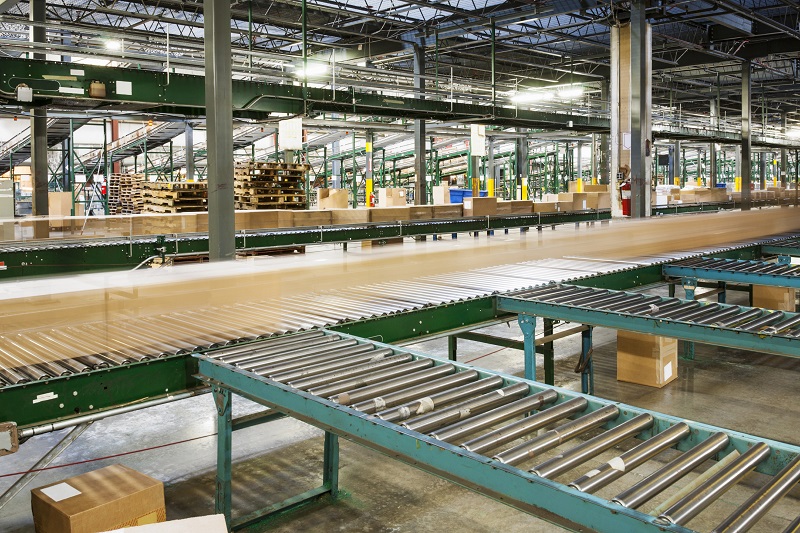More Clicks, New Bricks
After running the massive expansion of Amazon’s fulfillment network, Ben Conwell of Cushman & Wakefield sheds light on the next wave of e-commerce distribution facilities.
By Amanda Marsh
As director of North American real estate for Amazon.com, Ben Conwell led the largest and fastest expansion of network capacity in the Internet giant’s history. He managed a fulfillment network of 90 facilities comprising 60 million square feet and helped deliver 25 million square feet of build-to-suit projects.
Now a senior managing director with Cushman & Wakefield Inc., Conwell joined the firm last year to lead its recently formed E-Commerce and Electronic Fulfillment Specialty Practice Group. Recently he shared insights with CPE about current trends and future directions for the industrial sector.
CPE: What do the next couple of years hold for e-fulfillment facilities, and where is demand today?
Conwell: We expect e-commerce distribution activity to continue strong in 2016 and beyond. In turn, more big-box inventory—those distribution centers in the 1 million-square-foot range that have been making headlines for the past few years—will come online, as need for the largest fulfillment centers has not gone away. One interesting shift involves notably strengthening demand for smaller, close-in buildings as retailers sharpen their focus on last-mile delivery and getting the right inventory as close to the customer as feasible.
CPE: How are things looking on the supply side?
Conwell: Vacancy rates are approaching zero in California’s Inland Empire and Northern New Jersey. High demand in other leading markets is seriously limiting space availabilities.
CPE: Is development keeping up with that lack of space?
Conwell: While spec development is trying to keep up with demand, it is challenged to do so in these top-tier markets. The investment community continues to chase development opportunities, and we are seeing strong interest, not just among domestic entities but from offshore institutions, including sovereign wealth funds.
CPE: Is build-to-suit the preferred approach? Or are customers adapting existing properties?
Conwell: The answer is both. Where they can afford to wait, e-commerce users will often opt for build-to-suit to create product that meets specific requirements. But that’s not always viable. Those that most require speed to market are taking existing product. The larger, traditional fulfillment requirements—involving a high number of parking stalls, massive trailer parking fields and other specialized requirements—can very rarely be accommodated in existing buildings. However, built product may well meet the needs of, for instance, a 350,000-square-foot user seeking a close-in site.
CPE: Do most retailers prefer distribution facilities that provide shipping both to stores and to individual customers from a single location?
Conwell: This is the $64 billion question. Every retailer is different, in terms of its supply chain, omni-channel requirements and individual store replenishment needs. This makes it hard to generalize (about) whether we will increasingly see online fulfillment incorporated into a store replenishment model versus more creation of a distinct online distribution platform. Both options are complex, disruptive and expensive. Hence the popularity of multi-platform service providers like Cushman & Wakefield that partner with retailers through the process of developing an appropriate omni-channel supply chain and then the appropriate real estate strategy to support the supply chain.
CPE: Although the advantages of housing both functions at the same site seem self-explanatory, are there any challenges?
Conwell: Store replenishment—by fulfilling pallets or case-pack—is very different from online picking of “eaches.” The space and technologies needed to receive, stock, pick and ship one set of headphones, for example, are not the same as those required when moving a pallet of a hundred sets of headphones.
One potential trend is worth calling out here. We are beginning to see examples of some select retailers that have relied on third-party logistics providers for online fulfillment moving to self-performing. They have to commit to making it a core competency, having underwritten the significant investments—capital, management and infrastructure—required to self-perform.
CPE: What are retailers looking for in the design of e-fulfillment distribution facilities today?
Conwell: Building depth is a fluid factor in the industry and is heavily impacted by the type of material handling system planned for inside the facility, as well as fire and life-safety requirements. For instance, a 40-foot-plus clear building with employees working on the third floor of a pick module needs to be narrower, unless the tenant is willing to spend significantly to incorporate fire-rated corridors, which can impact flow of inventory through the building.
Facilities that only handle pallets on the floor or racked can have different dimension needs than a multi-level, high-density employment building. For the most part, we see the larger users seeking—and consequently spec developers building—product with depths of 570 to 600 feet. Depending on the material handling equipment solution, much beyond 600 feet starts to pose issues.
CPE: To what extent are brick-and-mortar stores playing a larger role in the sector’s expansion?
Conwell: Brick-and-mortar stores are investing heavily to leverage the biggest differentiator they have against pure-play online: an existing network of inventory in close proximity to the customer. The click-and-collect model is exploding. Leading examples include retailers operating in-store pick-up such as Walmart, Target, Kohl’s, Best Buy, JC Penney, Macy’s and Nordstrom. Walmart has 4,500 potential fulfillment centers, more than 50 times what Amazon has. Shipping from stores directly to customers is also growing quickly.
CPE: What’s the key to making a click-and-collect offering successful?
Conwell: To have an absolutely flawless in-store inventory management system and the right supply chain behind it. This is an ongoing priority, as retailers have to avoid in-store stock-outs. Fulfilling off the store shelf for both walk-in and online shoppers requires significantly more complex math to project and manage having the right product, in the right local store whenever the customer needs it.
This also impacts the amount of inventory held on the shelf, in the back of the store and in nearby distribution centers capable of rapid replenishment. How much inventory is kept in the store, for example, challenges paradigms about the traditional amount of back-of-store storage that is required.
CPE: Besides back-of-store storage, have there been any other impacts to the way brick-and-mortar stores operate or utilize their spaces?
Conwell: The retailers that are most successful have also retooled layouts inside and outside the store. To create optimal convenience for shoppers, retailers are dedicating high-visibility pickup spaces at the front of the store. Walmart is rolling out drive-up pickup, where mobile devices let store staff know the customer is pulling into the parking lot and assign a pick-up lane. An employee comes out and loads the purchase into the vehicle. Other retailers and malls are testing other forms of curb-side pick-up of online orders. How retailers utilize physical stores and the supply chains behind them will continue to rapidly evolve.










You must be logged in to post a comment.